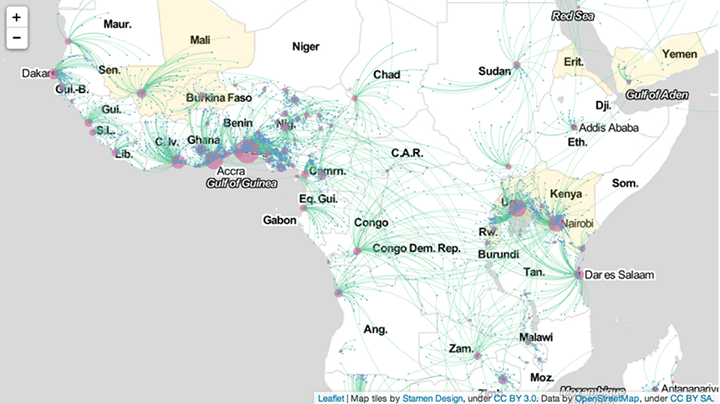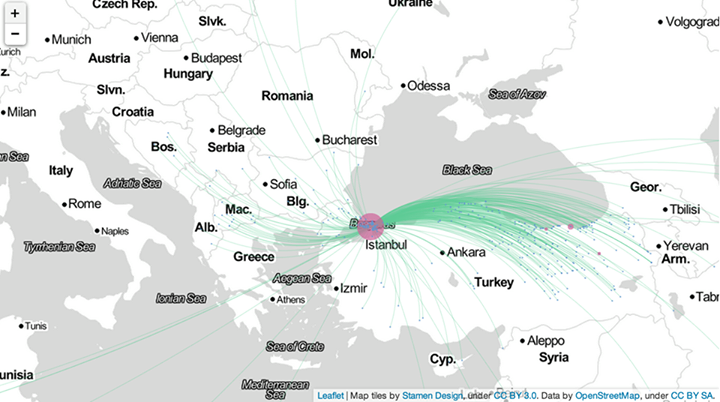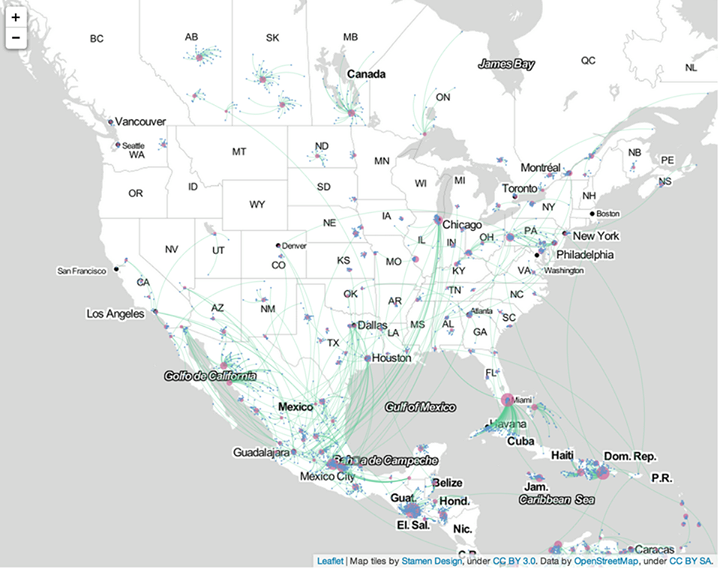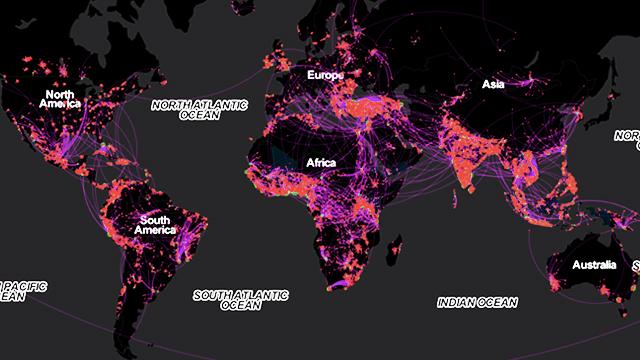The basic shape of urban growth is easy to spot; we look at the fastest-growing cities, for example, or immigration numbers. But yesterday, Facebook’s Data Science team revealed a less obvious pattern: Mass coordinated migration, where a group from the same city moves to another. Who are the winners and losers in this urban game?
First of all, a bit of background on the methodology. The data team used the most basic information from users’ profiles: Hometown and current city. They grouped data points by users who shared hometowns and current cities, creating a map of group migration all over the globe. Below, red dots represent destination cities, while blue dots represent origin cities.

Some of the migration comes from rural areas inside a single country. But much of it is international, too. For example, Kampala is a major node on the map — it’s receiving tons of immigrants from the Democratic Republic of Congo, still wracked by fighting. Meanwhile, Turkey is probably the biggest red dot — representing destination cities — drawing people from all over Eastern Europe with its economic boom:

The Data Science team also did us the favour of ranking the cities receiving the largest coordinated migrations by the numbers — along with the most popular origin sites:
- Lagos, Nigeria (from within Nigeria)
- Istanbul, Turkey (from within Turkey, Macedonia, and Bulgaria)
- Bogota, Colombia (from within Colombia)
- Bangkok, Thailand (from within Thailand)
- Accra, Ghana (from within Ghana)
- Hyderabad, India (from within India)
- Kampala, Uganda (from within Uganda and Congo)
- Lima, Peru (from within Peru)
- Chennai, India (from within India)
- London, England (from within England
You’ll notice the U.S. is absent from the top 10.
What’s going on stateside?
Interestingly, big coastal cities don’t really rank — because everyone moves to New York. From everywhere. But a group of people moving from one place to another together — that’s more unusual. The most common mass migration lands in Miami, with immigrants streaming from Cuba into the U.S. Meanwhile, major economic hubs like Houston and Chicago are the final destination of many leaving Mexico.
Another detail: Facebook’s data scientists describe Mexico as a source of “chain migration,” where many of the people moving to a city are coming from the same hometown: One family member goes, then another, then extended family, then friends, and so on.

Keep in mind, this data doesn’t have a specific time frame, since Facebook users range in ages, meaning their hometown and current city compare could be separated by decades. So, roughly, these maps include data from the past 60 or 70 years — though it likely skews younger due to Facebook demographics.
Though “worldwide flows of human beings are highly complex and notoriously difficult to measure,” says Facebook’s Aude Hofleitner, “large-scale migrations are an important part of human history.” These migrations show us the booms, the busts, the wars, the environmental crises, and the political instabilities. But rather than telling these stories in blog posts or news reports, Facebooknhas collated cause and effect at the scale of millions of people, shifting from one metropolis to the next like a nomadic tribe. [Facebook; Quartz]
